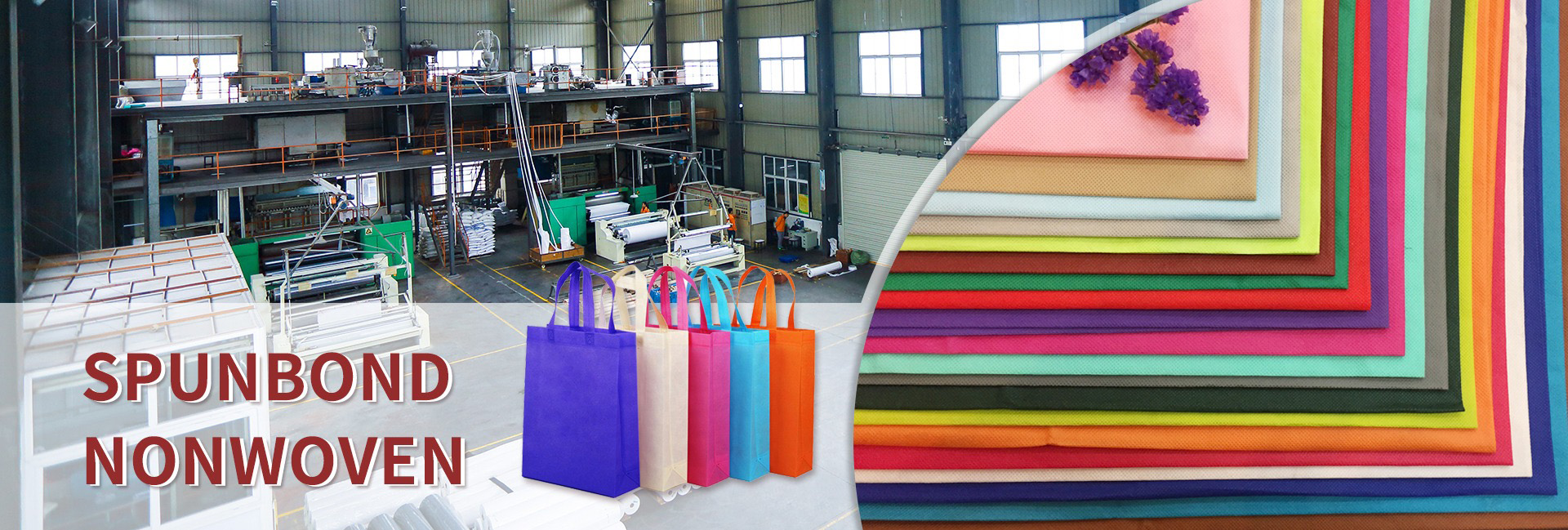The core difference between S spunbond nonwoven fabric (single-layer spunbond) and SS spunbond nonwoven fabric (double-layer spunbond) lies in the number of structural layers, production process, performance characteristics and application scenarios. The following is a specific analysis:
Number of structural layers and production process
S nonwoven fabric (single-layer spunbond) It is formed by a single-layer polypropylene fiber web through a hot rolling process. The production equipment is only equipped with one spinneret, with about 6000-10000 spinneret holes, and the process flow is relatively simple. SS nonwoven fabric (double-layer spunbond) It is composed of two independent layers of spunbond fiber webs superimposed and hot-rolled. The production equipment needs to be equipped with two spinnerets to generate two layers of fiber webs and then composite them. This double-layer structure requires more complex web forming technology (such as double-die spinning) and has higher requirements for web laying uniformity.
Differences in physical properties
Characteristics S non-woven fabric (single layer) Softness: relatively stiff, suitable for scenes requiring shaping; Strength: single layer has low strength; Uniformity: slightly large fluctuation in weight; Breathability: good breathability SS nonwoven fabric (double layer) Softness , suitable for scenes that require shaping Significantly softer, skin-friendly (such as silk);Strength ,Double layer composite increases longitudinal and transverse tension, and has stronger tear resistance;Uniformity , The gram weight is more stable after the fiber web is superimposed, and the fabric surface is more uniform,Breathability ,Slightly lower due to the double layer structure, but can be optimized by adjusting the fiber fineness. Influence of special processes: S non-woven fabric can improve softness by adding elastomers and softeners (such as formula: polypropylene + elastomer + softener + cooling masterbatch), even exceeding untreated SS fabric; and SS non-woven fabric can also enhance stiffness by adjusting hot rolling pressure (such as 5-6.5MPa) and temperature (≤132℃).
Application scenarios
S non-woven fabric Mainly used in packaging materials (such as handbags, film-coated substrates), industrial filter materials and other fields that require stiffness. SS non-woven fabric Due to its soft, skin-friendly and antibacterial properties, it is widely used in sanitary materials: Baby diapers/sanitary napkin surface (ultra-soft touch required); Medical protective clothing/surgical drapes (double-layer structure is more resistant to liquid penetration); High-end wipes/beauty mask base fabric.
Cost and production considerations
Equipment investment: SS production line requires double spinnerets and more complex web forming systems, and the cost is higher than that of single S equipment. Raw material consumption: SS consumes more material due to its double-layer structure, but the cost can be balanced by reducing the single-layer weight.
Summary: How to choose?
Choose S non-woven fabric: high cost performance and stiffness are required (such as packaging, industrial use); Choose SS non-woven fabric: pursue softness, skin-friendliness and high strength (such as maternal and child, medical products). In actual applications, special processes can break through structural limitations (such as softening S cloth or hardening SS cloth), so it is necessary to consider performance requirements and costs comprehensively. Dongguan Liansheng Non woven Technology Co., Ltd. was established in May 2020. It is a large-scale non-woven fabric production enterprise integrating research and development, production, and sales. It can produce various colors of PP spunbond non-woven fabrics with a width of less than 3.2 meters from 9 grams to 300 grams.
Post time: Jul-11-2025

